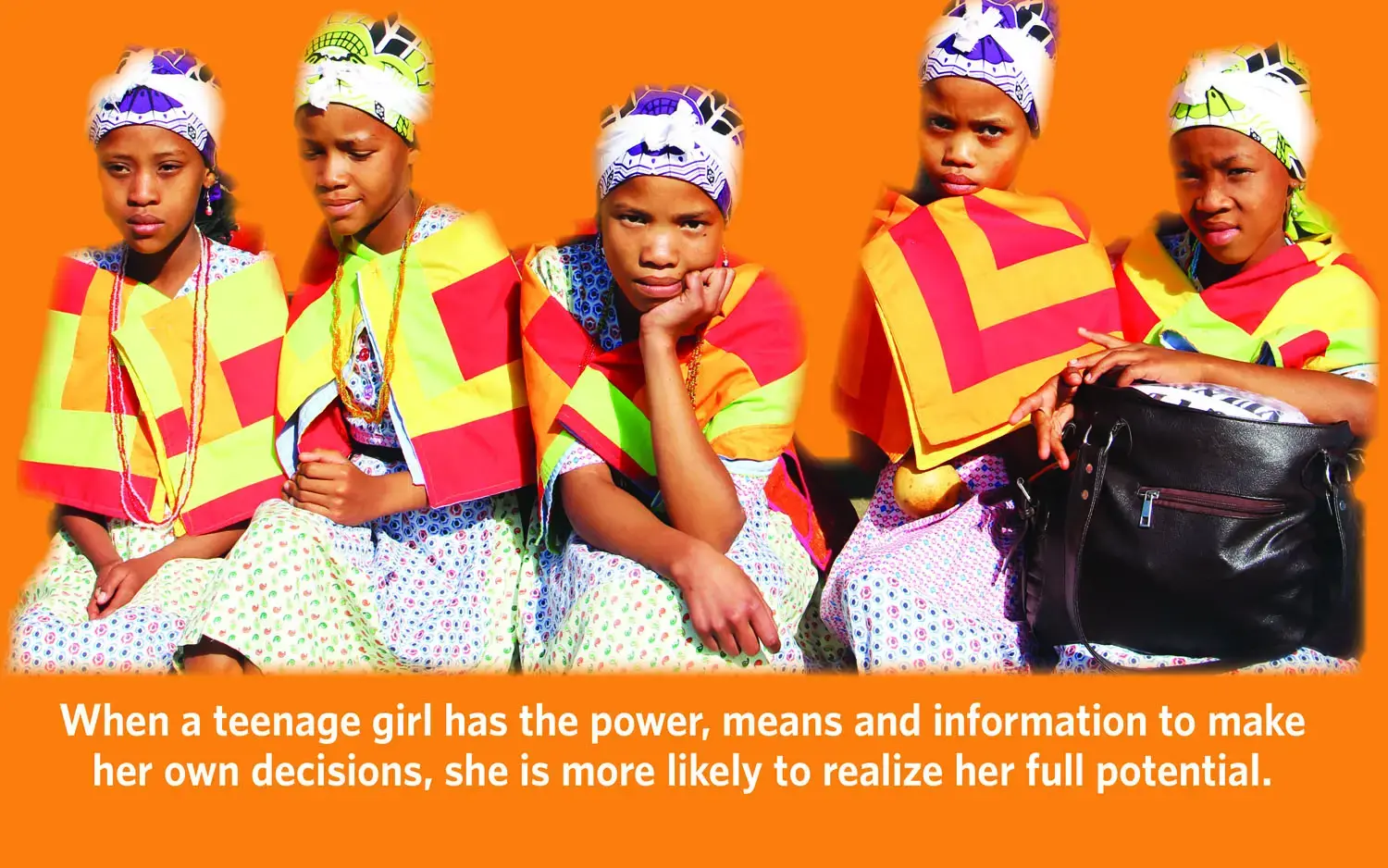Empowering women and adolescent girls to make free and informed choices about their sexual and reproductive health, survive childbirth, stay in school, participate fully in society and contribute to the economy, helps them and their children live healthier, richer lives and builds stronger and more prosperous nations. Although Namibia is classified as an upper-middle income country, it is faced with vast economic and social inequalities.
Namibia is predominantly youthful population with 66 per cent of the population below the age of 30. Young people below the age of 25 constitute 58 % and adolescents (10-24 years) constitute 33% of the total population. This population bear the brunt of many social challenges such as poor sexual and reproductive health outcomes. The health status of adolescents and young people have been negatively influenced by the country’s unequal socioeconomic development and heavily impacted by the HIV/AIDS epidemic. The country is among the top ten countries globally with high HIV prevalence and teenage pregnancy.
Although fertility is low at 3.6 it remains high among the poorest Namibians at 5.5 in contrast to 2.3 among the wealthiest, and it similarly high in rural 4.7 in comparison with urban of 2.9. The national contraceptive prevalence rate is 50.2 per cent of women aged 15 to 49. The use of contraceptives among young people 15-19 is 24 percent and 56 percent for age group 20-24 years. Unwanted pregnancy in the country is significantly high as observed by the high teenage pregnancy rate and the frequent reporting of “Baby Dumping” as well as the occurrence of unsafe abortions. Nineteen (19%) of women age 15-19 have begun childbearing process with regional variations showing rates as high as 38%.
Young people aged 15 – 24 who did not have comprehensive knowledge on HIV stood at 61.6% and 51.1% for female and males respectively as noted in the 2013 DHS. Of the estimated 8,136 new infections in 2011–2012 it was estimated that 43 per cent of the new infections occurred among the age group 15–24 years, with females accounting for more than two thirds of those new infections. According to the 2014 Namibia Labor Force Survey; the overall youth (15-34) unemployment rate is 39%, where unemployed females outnumber males by about 25%. According to a national review on school dropout and out of school conducted in 2015; approximately 63% of children and young people between 7 and 19 years are not in school.
Obstetric Haemorrhage, eclampsia, obstructed labour and unsafe abortion are major complications of pregnancy and childbirth causing maternal mortality in Namibia. Maternal mortality ratio has been reported as 385 deaths per 100,000 live births. The majority of pregnant women use antenatal care and deliver in the health institutions with 88 per cent delivering with the assistance of a skilled provider. However, only 73 per cent of births to women in the lowest wealth quintile had access to skilled provider, in contrast to 98 per cent of births to women in the highest quintile. Access to health care when remains a challenge particularly to women with 31 percent of women experiencing distance related challenge to access health facilities.
UNFPA response
Adolescents and young people are central to the development agenda and safeguarding their rights, health and investing in their future by providing quality education, access to sexual reproductive health and comprehensive sexuality education is essential to their development and that of their families, communities and Namibia as a whole. To this end,
• UNFPA works to support government and civil society organisations to implement sexual and reproductive health (SRH) programmes focusing on adolescents and young people by ensuring that access to quality adolescence SRH services and information is met.
• We also foster participation and engagement of adolescents and young people through youth networks to ensure that they are central to the design and implementation of the programmes that affect them.
• Support to the Ministry of Health and Social services in improving adolescence sexual and reproductive health, through capacity building for health workers on Adolescents Friendly Health services. This includes ensuring that adolescents and young people have access to a full range of combination prevention services for HIV.
• Support the Ministry of Education Arts and Culture in strengthening Comprehensive Sexuality Education (CSE), this includes support to review the Life Skills Education curricula and capacity building of teachers in order for them to empower young people to protect their health, well-being and dignity, resulting in responsible behaviour.


